A NEW APPROACH IN WEARABLE DEVICES
Researchers have been looking into wearable devices that are based on real extensions to the bodies of other animals. By seeing how those animals operate with these extensions, we can make natural additions to the human body.
Latest research on Global Animal Blood Products Market report covers forecast and analysis on a worldwide, regional and country level. The study provides historical information of 2016-2021 together with a forecast from 2021 to 2026 supported by both volume and revenue (USD million). The entire study covers the key drivers and restraints for the Animal […]
A survey of some of the new, interesting devices inspired by Nature.
Nature embraces an intriguing strategy to create high-performance biomaterials, such as spider silk which presents an unparalleled combination of stiffness, tensile strength, and toughness via hierarchical structures. However, to fabricate synthetic polymers with such excellent properties remains a challenging task. Inspired by the integration of multiblock backbone and densely H-bonding assemblies in spider silk as […]
An on-off switch for gene editing
Over the past decade, the CRISPR-Cas9 gene editing system has revolutionized genetic engineering, allowing scientists to make targeted changes to organisms’ DNA. While the system could potentially be useful in treating a variety of diseases, CRISPR-Cas9 editing involves cutting DNA strands, leading to permanent changes to the cell’s genetic material.
Building on Biodesign: Lab Grown Meat for the Future
The purpose of this article is to educate the community about the potential for using proteins sourced from different organisms as a means of growing artificial meat in-vitro.
The mission of the Public Programs Volunteer Program is to support the Academy through informal and interactive educational engagement with Academy guests that inspires curiosity, learning, and action based on scientific knowledge. Volunteers accomplish this mission by engaging guests with conversations and hands-on experiences that educate and […]
Scientists have developed robots inspired by whiskers that allow for exploration in dark and murky environments. Using analysis of how whiskers respond to water and air flow, researchers in the U.S. and Singapore have created a robotic device that draws on ‘vibrissal sensing’. These robots can reach places that previous sonar […]
Slithering snake-like robots look primed to service and maintain underwater structures as several firms continue tests on prototypes that could eventually populate our oceans. This week, April 13, Carnegie Mellon University (CMU) robotics lab announced it has added swimming to its snake robot’s list of capabilities, “allowing the modular robotics platform […]
Using statistical and biological modeling, scientists have discovered that several species can be affected by Covid. Scientists showed that the receptor for the virus, angiotensin converting enzyme-2, or ACE2, is present in many other species other than human. Western lowland gorilla, Sumatran orangutan, chimpanzee, and bonobo are especially at risk.
Bioinspired hydrogels have promising applications in wearable devices, human health monitoring equipment, and soft robots due to their multifunctional sensing properties which resemble natural skin. In this paper, the researchers designed a bioinspired hydrogel with multiple conductive capabilities by incorporating carbon nanotubes into […]
New Wind Turbines Mimic Hummingbird Wings
Developed by Tyer Wind, a startup based in Tunisia, the turbine uses biomimicry principles to replicate the mechanical action of hummingbird wings. The design is fundamentally different from standard rotor-based wind turbines because instead of converting linear motion – wind blowing across the land – into a circular motion, it converts it into a figure-eight […]
Most robotic parts used today are rigid, have a limited range of motion and don’t really look lifelike. Inspired by both nature and biology, a scientist from Florida Atlantic University has designed a novel robotic finger that looks and feels like the real thing. In an article recently published in the […]
A new bio-inspired algorithm, namely Bird Swarm Algorithm (BSA), is proposed for solving optimisation applications. BSA is based on the swarm intelligence extracted from the social behaviours and social interactions in bird swarms. Birds mainly have three kinds of behaviours: foraging behaviour, vigilance behaviour and flight behaviour. Birds may forage for food and escape from […]
The NSF funded Engineering Center for Bio-mediated and Bio-inspired Geotechnics (CBBG) focuses on ecologically friendly, cost-effective solutions, inspired by nature, for development and rehabilitation of resilient and sustainable civil infrastructure systems. It serves as a nexus for two transformative trends in engineering: biologically-based design and sustainability. The center propels the US […]
Center for Biologically Inspired Design, Georgia Tech
The Center for Biologically Inspired Design at Georgia Tech brings together biologists, engineers, and physicals scientists in order to educate others on bio-inspired design, conduct research in the field of bio-inspired design, and train others to engage with bio-inspired design. The center offers K-12 curriculum on biologically inspired design to encourage […]
The nervous system of the fly has been researched thoroughly by scientist, and have found out that the protein Rab2 has to be in the system for all the nerve cells to function. When removed acting like a “traffic jam” of the nervous system. This relates to humans, where people with […]
Hybrid Living Fibers
In concert with the Mediated Matter group’s HLM additive manufacturing research, the emergent field of Hybrid Living Fibers (HLF) or “biohybrid” fiber systems has derived novel techniques to encapsulate or adsorb living and bio-active agents within fiber-based constructs.
Rolf Mueller, a professor at Virginia Tech, has created a synthetic bat ear device that can determine the origin of any sound it picks up. Mueller was inspired by bats and their echolocation abilities, and focused specifically on the ability of their ears […]
Stanford BioDesign Fellowship
Stanford Biodesign is seeking a Student Services Specialist to provide a full range of administrative and operational duties working under general supervision. The Program and Fellowship Coordinator reports to the Director of Operations and Finance and supports the Fellowships Manager. This position is a critical role within the Center with two […]
Inspired by the workings of a bat’s ear, Rolf Mueller, a professor of mechanical engineering at Virginia Tech, has created bio-inspired technology that determines the location of a sound’s origin. Traditional approaches to sensing have often been aimed at simple sensor characteristics to make interpretation of the sensor outputs easier, but this has also limited […]
Neurons lack the ability to replicate their DNA, so they’re constantly working to repair damage to their genome. A new study finds that these repairs are not random, but instead focus on protecting certain genetic ‘hot spots’ that appear to play a critical role in neural identity and function.
Robotics have become an active research area in recent years. Bioinspired foot robots have become a topic of interest in the field of robot research, because of their unique motion form, control method, and adaptability in complex environments [1, 2]. The stability and load capacity of a quadruped robot are much […]
Inspired by a couple of simple organisms, this paper presents a novel hybrid bionic robot, called ”particle robot”, which mix a macro-organism and a micro-organism in the same robot. The robot has two main configurations: when the spines are contracted it becomes a […]
Periodic food shortages are a major challenge faced by organisms in natural habitats. Cave-dwelling animals must withstand long periods of nutrient deprivation, as—in the absence of photosynthesis—caves depend on external energy sources such as seasonal floods1. Here we show that cave-adapted populations of the Mexican tetra, Astyanax mexicanus, have dysregulated blood […]
Graphene oxide (GO), which has many oxygen functional groups, is a promising candidate for use in moisture‐responsive sensors and actuators due to the strong water–GO interaction and the ultrafast transport of water molecules within the stacked GO sheets. In the last 5 years, moisture‐responsive actuators based on GO have shown distinct […]
A bio-inspired way to advance surgical procedures like suturing has been discovered. Currently, sutures, which are fiber-based devices, aren’t designed optimally due to the mismatch in both materials and mechanisms. Usually, the suture properties deteriorate over time and the protective coating of the suture can be prone to rupturing. The newly proposed materials for the […]
Effects of Psilocybin-Assisted Therapy on Major Depressive Disorder
Is psilocybin-assisted therapy efficacious among patients with major depressive disorder? In this randomized clinical trial of 24 participants with major depressive disorder, participants who received immediate psilocybin-assisted therapy compared with delayed treatment showed improvement in blinded clinician rater–assessed depression severity and in self-reported secondary outcomes through the 1-month follow-up. This randomized […]
Abstract: Soybean meal-based adhesives have been applied in many fields due to the abundant source and eco-friendly property. However, the preparation of high-performance soybean meal-based adhesives was still challenging. Inspired by the mineral-organic hybridization structure of nacre, hydroxyapatite and tannic acid complex was used as rigid nanofiller and cross-linker to improve […]
This article discusses the fascinating nature of biomimicry and how it translates into innovative fashion garments. Bioinspired design is all around us, and this article is just one of many examples of ways it can be applied. Check it out to read more on the interesting and innovative pieces inspired by […]
Rolf Mueller, a professor of mechanical engineering at Virginia Tech created technology that determines the location of a sound’s origin, inspired by bats. A picture of the synthetic bat ear designed by Professor Mueller and his team is attached.
Nacre, the iridescent material that lines mollusk shells such as mother-of-pearl and abalone, has long been a prized find of beachcombers and shell collectors, due to the natural beauty and variety of color that can be found therein. But scientists and engineers have also long marveled at and studied nacre; it’s […]
News, Plant gene found in insect, shields it from leaf toxins
Millions of years ago, aphid-like insects called whiteflies incorporated a portion of DNA from plants into their genome. A research team reveals that whiteflies use this stolen gene to degrade common toxins plants use to defend themselves against insects, allowing the whitefly to feed on the plants […]
I came across a course that seems to expand on some of the design principles that we have covered in a more general context (rather than biology). These design skills would be useful to anyone entering an industry involving human interaction with a product. I have attached the course description. “This course surveys topics related […]
Chen designed a more resilient tiny drone using soft actuators instead of hard, fragile ones. The soft actuators are made of thin rubber cylinders coated in carbon nanotubes. When voltage is applied to the carbon nanotubes, they produce an electrostatic force that squeezes and elongates the rubber cylinder. Repeated elongation and […]
Students taking part in the program spend 8 to 12 weeks working in a laboratory of the NCCR Bio-Inspired Materials, where they have the opportunity to work on a research project and to interact with leading experts in their fields of interest and fellow students from around the world. The students […]
About Connections
Team Connections. Before most Monday classes, design teams will add a Connection to share Bioinspired Design connections. These URLs can include relevant design or biology courses on campus; links to campus organizations, clubs, institutes and competitions interested in design; biological discoveries and bioinspired designs from news and journals; global research, centers, and institutes; and internships, public service, […]
Learn about our two Decals!
 Click here to find out more about our Fall Bioinspired Design Decal and our Spring Bioinspired Design in Action Decal – ALL MAJORS are welcome.
Click here to find out more about our Fall Bioinspired Design Decal and our Spring Bioinspired Design in Action Decal – ALL MAJORS are welcome.Berkeley BioDesign Community
 Click here to learn about the BioD: Bio-Inspired Design @ Berkeley student organization or here to signup for more info.
Click here to learn about the BioD: Bio-Inspired Design @ Berkeley student organization or here to signup for more info.Search
Student Login

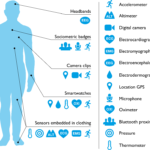



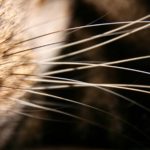
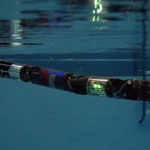
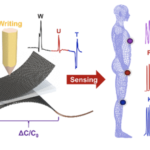
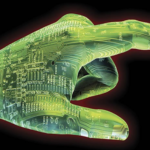







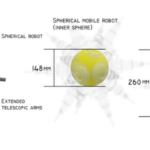
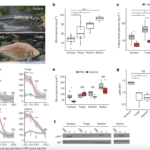

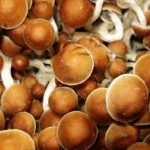
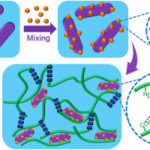
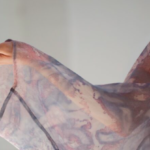



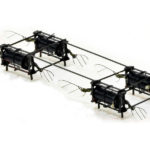



I imagine that the neurological circuits underlying these processes are governed by both 2d spacing maps with their brains as…
to reduce the impact of car accidents, it may be possible to study the force diverting physics of cockroaches to…
you see this type of head-bobbing stability in many avian creatures related to pigeons like chickens. the head ability to…
not like they taught horses how to run! this is an example of convergent evolution where both sea creatures and…
The brain functions in a similar way with neuronal connections. our brains are able to utilize the multiplicity of connections…